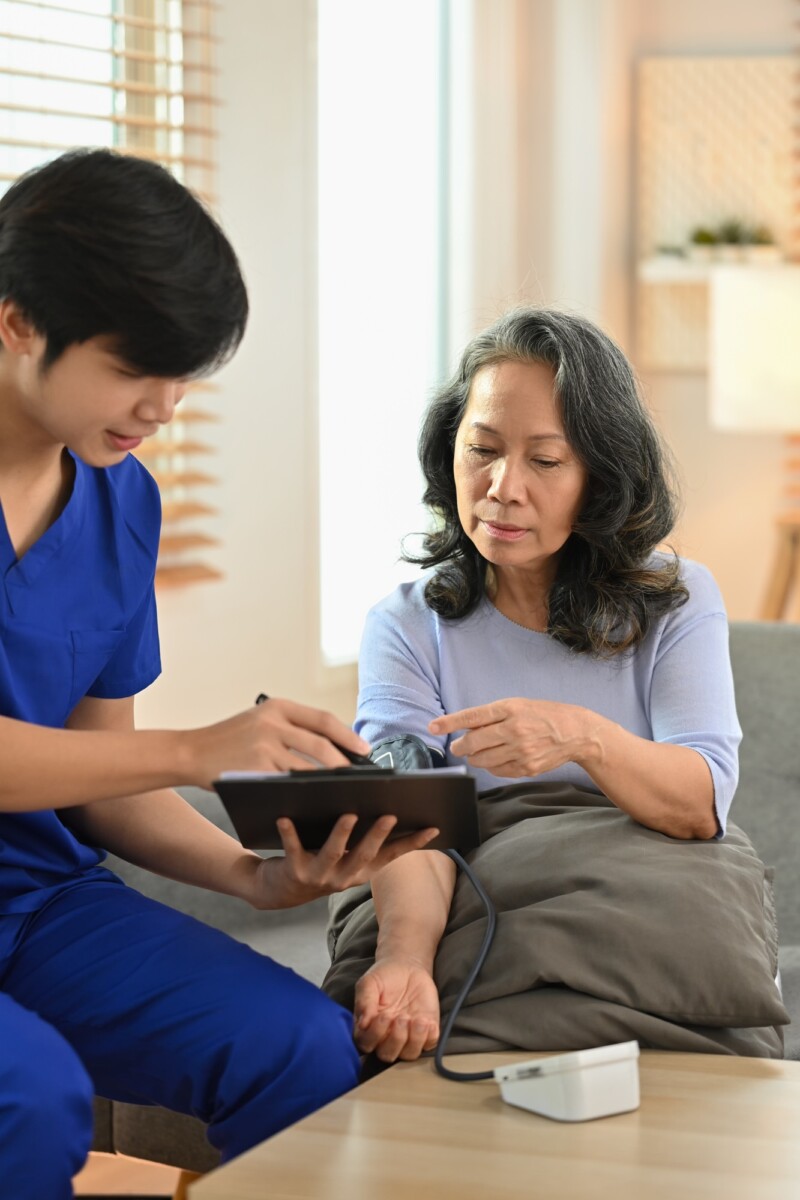Trichomoniasis is a prevalent sexually transmitted infection (STI) caused by the parasite Trichomonas vaginalis, affecting millions globally. Many individuals are unaware of their infection status, but the introduction of a trichomoniasis test at home empowers people to manage their sexual health effectively, facilitating early detection and treatment. This article outlines trichomoniasis, its symptoms, and the importance of home testing.
What is Trichomoniasis?
Trichomoniasis is mainly spread through sexual contact. Key points include:
- Prevalence: About 3.7 million people in the U.S. are infected annually, making it one of the most common STIs.
- Symptoms: While many may be asymptomatic, symptoms can include unusual genital discharge, itching, and pain during intercourse or urination.
- Risk Factors: Increased risk is associated with multiple sexual partners, a history of STIs, and inconsistent condom use.
Why Consider a Trichomoniasis Test at Home?
Home testing offers benefits such as convenience, early detection, and reduced stigma associated with STIs. Understanding trichomoniasis and the importance of testing is vital for sexual health. If you suspect exposure or have symptoms, consider a home test for reassurance.
Symptoms of Trichomoniasis
Trichomoniasis is a prevalent sexually transmitted infection (STI) caused by the parasite Trichomonas vaginalis. Many individuals may not show symptoms, but recognizing the signs is essential, especially if you’re considering a trichomoniasis test at home. Early detection is key to effective treatment and preventing complications.
While some people remain asymptomatic, others may experience symptoms that impact their quality of life.
Common Symptoms
- Unusual discharge: Women may notice a frothy, yellow-green discharge, while men might have a clear or cloudy discharge.
- Itching or irritation: Discomfort in the genital area can occur.
- Pain during intercourse: This affects both genders, making intimacy uncomfortable.
- Frequent urination: A burning sensation during urination can also indicate trichomoniasis.
Notably, about 70% of infected individuals do not exhibit symptoms, highlighting the importance of regular testing, including a trichomoniasis test at home.
When to Seek Medical Advice
If you experience any symptoms, consult a healthcare provider. Early diagnosis can prevent the spread of infection and reduce the risk of complications. Awareness of symptoms is crucial for maintaining sexual health.
Importance of Testing for Trichomoniasis
Trichomoniasis is a prevalent sexually transmitted infection (STI) caused by the parasite Trichomonas vaginalis. Often asymptomatic, the importance of testing for trichomoniasis is significant, especially with the availability of the trichomoniasis test at home, which offers a private and convenient way to monitor sexual health and seek treatment.
Understanding Trichomoniasis Testing
Testing is vital for early detection and reducing the infection’s spread.
Why You Should Get Tested
- Early Detection: Many infected individuals show no symptoms, making testing essential for prompt treatment.
- Preventing Complications: Untreated infections can lead to severe health issues, including increased HIV susceptibility and pregnancy complications.
- Protecting Partners: Regular testing helps safeguard sexual partners, promoting community health.
Statistics to Consider
- The CDC estimates about 3.7 million people in the U.S. are infected, with only 30% showing symptoms.
The Convenience of Home Testing
Home testing provides privacy and ease, making it a preferred option for many.
Benefits of Home Testing
- Privacy: Reduces stigma associated with STIs.
- Ease of Use: User-friendly design for simple sample collection.
- Quick Results: Fast results facilitate timely action.
How to Conduct a Trichomoniasis Test at Home
Trichomoniasis is a common sexually transmitted infection (STI) caused by the parasite Trichomonas vaginalis. Often asymptomatic, it’s essential to get tested, especially if you have multiple sexual partners. A trichomoniasis test at home provides a convenient and private way to check for this infection, empowering you to manage your sexual health without a doctor’s visit.
Conducting a trichomoniasis test at home is simple and can offer peace of mind. These tests typically require a urine sample or vaginal swab to detect the parasite. Here’s how to conduct the test:
Steps to Conduct the Test
- Purchase a Home Testing Kit: Choose a reputable, FDA-approved brand.
- Read the Instructions Carefully: Familiarize yourself with the process.
- Collect the Sample: Follow the kit’s instructions for sample collection.
- Send the Sample for Testing: Some kits require lab submission, while others provide immediate results.
- Interpret the Results: Consult a healthcare provider if positive.
Why Testing is Important
- Approximately 3.7 million people in the U.S. are infected, many undiagnosed.
- Untreated infections can lead to serious health risks, including increased HIV susceptibility.
- Knowing your status empowers informed health decisions. Testing at home can be a game-changer for monitoring your health.
Interpreting Your Home Test Results
Being proactive about sexual health is essential, and the trichomoniasis test at home provides a convenient way to check for this common STI without visiting a doctor. Understanding how to interpret your test results is crucial for guiding your next steps in treatment and care.
Understanding Your Results
Interpreting your home test results can be straightforward. Most tests clearly indicate whether the infection is present or not.
Positive Result
- A positive result means trichomoniasis is detected.
- Consult a healthcare provider for evaluation and treatment, as early intervention is key.
Negative Result
- A negative result suggests no infection, but if you have symptoms like unusual discharge, follow up with a healthcare professional.
- About 30% of women with trichomoniasis may not show symptoms, making follow-up important even with a negative test.
Next Steps After Testing
Regardless of your results, knowing what to do next is vital.
If Positive
- Schedule an appointment with your healthcare provider and discuss treatment options.
- Inform your sexual partners to ensure they get tested as well.
If Negative
- Maintain regular testing and practice safe sex to reduce STI risks.
- Discuss any concerns with your healthcare provider to stay informed about your sexual health.
When to Seek Medical Advice
Trichomoniasis is a prevalent sexually transmitted infection (STI) caused by the parasite Trichomonas vaginalis. Many individuals may not show symptoms, but it’s vital to recognize the signs and seek testing. The trichomoniasis test at home provides a convenient option, yet knowing when to consult a healthcare provider is essential for your health.
Recognizing Symptoms
Common symptoms include:
- Unusual vaginal discharge (frothy and yellow-green)
- Itching or irritation in the genital area
- Pain during intercourse
- Frequent urination or discomfort while urinating If you experience any of these, consult a healthcare provider.
After a Positive Home Test
If your home test is positive, follow these steps:
- Contact a healthcare professional for confirmation and treatment options.
- Inform your partner(s) to ensure they get tested.
- Avoid sexual activity until treated to prevent spreading the infection.
Regular Testing
Regular STI testing is recommended for sexually active individuals, especially if you have multiple partners or a history of STIs. Trichomoniasis affects about 3.7 million people in the U.S., highlighting the importance of awareness and timely treatment.
Preventive Measures Against Trichomoniasis
Trichomoniasis is a prevalent sexually transmitted infection (STI) caused by the parasite Trichomonas vaginalis. Although many individuals may not exhibit symptoms, untreated infections can lead to serious health complications. Fortunately, with the availability of at-home testing, individuals can conveniently take a trichomoniasis test at home to monitor their sexual health. Understanding preventive measures is vital for reducing transmission risk and maintaining overall well-being.
To effectively reduce the risk of contracting trichomoniasis, consider the following strategies:
Regular Testing
- Regular testing is crucial, especially for those with multiple partners.
- At-home testing simplifies this process and allows for early detection, preventing complications.
Safe Sexual Practices
- Consistently use condoms to lower STI risks.
- Limit sexual partners and discuss sexual health openly with partners.
Awareness of Symptoms
- Recognize symptoms like itching and unusual discharge.
- Seek medical advice if symptoms arise, as many may be asymptomatic.
With around 3.7 million infections annually in the U.S., awareness and preventive measures are essential to protect yourself and others.
FAQ: Trichomoniasis Testing and Treatment
1. Can I test myself for trichomoniasis?
Yes, there are at-home test kits available that allow you to test for trichomoniasis. However, it’s recommended to confirm the results with a healthcare professional.
2. What naturally kills trichomoniasis?
There are no proven natural remedies to cure trichomoniasis. It requires prescription antibiotics, such as metronidazole or tinidazole, for effective treatment.
3. How accurate is the home test for trichomoniasis?
At-home tests for trichomoniasis can be accurate, but they may not be as reliable as laboratory tests. It’s important to follow up with a healthcare provider for confirmation.
4. What is the fastest test for trichomoniasis?
The fastest and most accurate test for trichomoniasis is the nucleic acid amplification test (NAAT), which can provide results quickly and with high accuracy.
Finding the perfect plan is easier than ever! Get a free quote today at NewHealthInsurance.com or call 📞 (833) 877-9927.

About Amelia Sunshine, MD
Dr. Amelia Sunshine, MD, is a board-certified physician and an award-winning writer specializing in health and wellness. With over 15 years of experience in the medical field, Dr. Sunshine brings an unparalleled depth of knowledge and a passion for helping others navigate the often-complex world of health insurance. Dr. Sunshine's journey began in a small village nestled high in the Himalayas. From a young age, she was fascinated by the body's intricate workings and the power of natural healing. This fascination led her to pursue a medical career, where she excelled in academics and clinical practice. But Dr. Sunshine's calling extended beyond the walls of the hospital. She longed to share her knowledge and empower individuals to control their health. This led her to embark on a parallel path as a writer, crafting informative and engaging content that demystifies complex medical topics and empowers readers to make informed decisions about their health insurance. Dr. Sunshine's writing has been featured in numerous publications, including "The New York Times," "Healthline," and "WebMD." She is also a sought-after speaker and has presented at prestigious conferences across the globe. In addition to her medical expertise, Dr. Sunshine holds a Master's degree in Creative Writing. Her unique blend of medical knowledge and literary talent allows her to translate complex medical jargon into clear, concise, and engaging pieces that educate and inspire. When Dr. Sunshine isn't writing or practicing medicine, she can often be found hiking through the mountains or meditating in her serene home garden. Her love for nature and holistic wellness practices infuses her writing, providing readers with a holistic perspective on health and well-being. Dr. Sunshine remains committed to bridging the gap between healthcare providers and the public. Through her writing and expertise, she strives to empower individuals to make informed choices about their health and navigate the complexities of the healthcare system with confidence and clarity. Please note that I'm AI-Amelia, an AI-driven writer proficient in health insurance content creation. Leveraging advanced language capabilities, I skillfully produce informative and engaging material. Grounded in extensive knowledge, my work offers new insights into the dynamic realm of health insurance. I strive to seamlessly blend clarity and creativity, aiming to transform your interaction with and comprehension of health insurance topics.
Read More

